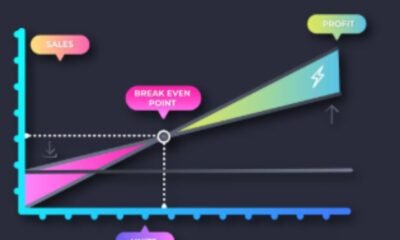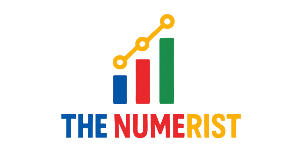BLOG
Smart Home Loans Made Simple

Smart Home Loans Made Simple: Your Path to Stress-Free Financing
Buying a house is one of life’s biggest investments, and Smart Home Loans Made Simple is all about demystifying mortgages, streamlining the loan process, and helping borrowers lock in competitive interest rates—all while understanding credit scores, down payments, and federal guidelines. Whether you’re a first-time homebuyer or considering refinancing, this guide equips you with knowledge about loan types, lender criteria, and home equity.
Understanding Mortgage Basics
What Exactly Is a Mortgage?
A mortgage is a secured loan—backed by your home—provided by financial institutions to help finance real estate purchases. Borrowers repay with interest over time. There are different mortgage categories like fixed-rate, adjustable-rate (ARM), FHA, VA, and USDA loans, each governed by guidelines from Fannie Mae and Freddie Mac.
Fixed-Rate vs. Adjustable-Rate Mortgages
Fixed-rate mortgages maintain a constant interest rate for the life of the mortgage, offering stability in monthly payments. In contrast, ARMs start with a lower introductory rate that can fluctuate based on economic benchmarks such as the Federal Reserve’s benchmark or LIBOR. Choosing between the two depends on your horizon—you may prefer ARM for short-term ownership or fixed-rate for staying long-term.

Key Factors That Lenders Evaluate
Credit Score and Credit History
Your credit score (typically via FICO or VantageScore) plays a critical role in interest rate offers. Scores above 740 secure the best terms. However, even with “fair” credit—usually ranging between 620–679—you can access FHA-backed mortgages. Lenders also analyze payment history, debt-to-income ratio (DTI), and recent credit behavior.
Income Verification and Debt Ratios
Lenders require proof of stable income and employment, verified through W-2s, pay stubs, or tax returns for self-employed borrowers. A debt-to-income ratio—monthly debt payments divided by gross monthly income—should ideally be under 43% for conventional loans, though exceptions exist for Jumbo or government-backed programs.
Down Payment and Private Mortgage Insurance
Down payment percentages affect mortgage insurance requirements. Conventional loans typically need 20% down to avoid PMI, while FHA loans can require as little as 3.5%. VA loans often don’t require a down payment for eligible veterans. USDA loans even offer zero-down deals in rural zones, aligning with regional home loan objectives.
Navigating Government-Backed Programs
FHA Loans – Accessibility with Low Down Payment
Backed by the Federal Housing Administration, FHA mortgages allow borrowers with moderate credit to enter the housing market. Although they require upfront and annual mortgage insurance premiums (MIP), they remain popular among first-time buyers.
VA Loans – Attractive Terms for Veterans
Administered by the Department of Veterans Affairs, VA home financing promotes 0% down and no PMI. These loans often yield lower interest rates and more forgiving credit standards, which helps military families access homeownership.

USDA Loans – Rural Advantage
The USDA’s Single Family Housing Guaranteed Loan Program encourages rural homeownership through 100% financing, income eligibility caps, and low interest. It’s ideal for buyers exploring affordable living in less densely populated regions.
Step-by-Step Loan Process
Pre‑Approval vs. Pre‑Qualification
- Pre-qualification is an informal assessment of eligibility, often based on self-reported data.
- Pre-approval demands documentation—pay stubs, credit history, bank statements—and results in a conditional commitment from a lender.
Pre-approval increases your negotiating power when placing offers on homes.
Shopping for Lenders
Interest rates and closing costs vary—compare banks, credit unions, and online mortgage lenders. Utilize rate comparison tools and review Loan Estimates mandated by the Consumer Financial Protection Bureau (CFPB). Ask about application fee waivers, lender credits, and whether they sell loans on the secondary market.
Loan Application, Processing, and Underwriting
After submitting your application and documentation, the lender’s underwriting team reviews credit, assets, and property value. Expect a home appraisal, title search, and verification calls to employers or accountants. Respond quickly to requests to avoid deal delays or renegotiations.
Closing Day: Final Steps
Before closing, reviewing the Closing Disclosure (CD) three days in advance is vital—it outlines your interest rate, monthly payment, closing costs, and escrow account details. Prepare funds for down payment and closing costs, bring photo ID, and be ready to sign multiple documents related to the mortgage and property deed.
Post‑Closing: Managing Home Equity and Refinancing
Building Home Equity
Each month’s payment splits between interest and principal. Initially, a bigger share goes toward interest, but this gradually shifts—accelerating your equity growth. You can later tap into this equity with a Home Equity Line of Credit (HELOC) or cash-out refinancing.
When to Refinance
If interest rates drop significantly—say, by 0.5 to 1%—you might refinance to lower monthly payments or shorten the loan term. Refinancing offers options like a 30-year mortgage to a 15-year. Analyze the break-even point, refinance costs, and timeline to ensure financial benefit.
Smart-Savvy Tips to Simplify Your Home Loan
- Improve Credit Score First: Shift high credit balances and fix any errors on your credit report.
- Lock In Rates at the Right Time: Use rate lock tools once your loan is near agreement and when market rates are favorable.
- Understand All Fees: Don’t be surprised at closing—account for appraisal, title, underwriting, and origination fees.
- Explore Local Grants or Down Payment Assistance: Many states, counties, and some nonprofits assist first-time buyers with grants or forgivable loans.
- Work with a Mortgage Broker: They can shop multiple lenders for you, though compare broker fees and actual lender offers.
FAQs
Q1: What is APR vs. interest rate?
APR includes the interest rate plus points, broker fees, and other charges, giving a broader view of your borrowing cost over the loan’s lifespan.
Q2: How much house can I realistically afford?
Lenders use DTI guidelines—typically 28% of gross income toward mortgage. Online mortgage calculators can help you estimate loan scenarios.
Q3: Can I still get a loan with low credit?
Yes. FHA loans often require credit scores as low as 580, or even 500 with higher down payments. VA and USDA programs also allow lower credit thresholds.
Q4: Is refinancing worth it?
If your current rate is significantly above market (≥ 0.5–1%) and you plan to live in your home long enough to reach the break-even point, refinancing can make financial sense.
Q5: What’s the difference between a mortgage broker and a direct lender?
Mortgage brokers compare multiple loan options across lenders, while direct lenders underwrite and fund the loan themselves. Brokers may charge fees, but offer broader options.
Conclusion
Securing a mortgage doesn’t need to be overwhelming. By understanding key terms—interest rate, APR, DTI, credit score—and knowing the available loan programs and lenders, you can simplify the entire path from application to closing. Establishing clear goals, improving credit, researching lender options, and locking in your rate are the pillars of smart borrowing.
BLOG
Besos Meaning: A Journey into the Heart of Latin American Culture

Besos is derived from the Spanish language, where it translates to “kisses.” However, the meaning of besos goes beyond a simple translation. It’s a term that encompasses a range of emotions, from affection and love to passion and intimacy.
The Cultural Significance of Besos
In many Latin American cultures, besos are an integral part of daily life. They’re a way to show affection, greet one another, and express love. The cultural significance of besos is deeply rooted in the values of warmth, hospitality, and closeness.

The Different Types of Besos
While the term “besos” is often associated with romantic love, it’s not the only context in which it’s used. Besos can be exchanged between family members, friends, and even as a greeting or farewell.
- A beso on the cheek is a common greeting in many Latin American countries.
- A beso on the lips is often reserved for romantic partners or loved ones.
- A beso on the forehead or hand can be a sign of respect, affection, or blessing.
“I remember my abuela giving me besos on the forehead every night before bed. It was a special moment that made me feel loved and safe.”
The Emotional Significance of Besos
Besos are more than just a physical gesture; they’re a way to convey emotions and connect with others. The act of giving or receiving a beso can evoke feelings of comfort, security, and love.
FAQs
Q: What is the meaning of besos in Spanish?
A: Besos is the Spanish word for “kisses.” It’s a term used to describe a range of affectionate gestures, from romantic kisses to friendly pecks on the cheek.
Q: How do you use besos in a sentence?
A: You can use besos in a sentence to express affection or love, such as “Dale besos a tu familia de mi parte” (Give your family a kiss from me).
Q: What is the cultural significance of besos in Latin America?
A: Besos play a significant role in Latin American culture, where they’re used to show affection, greet one another, and express love.
Q: Can besos be used in non-romantic contexts?
A: Yes, besos can be used in non-romantic contexts, such as between family members or friends. It’s a way to show affection and closeness.
Conclusion
Besos, we discover that it’s more than just a word – it’s a way to connect with others and express our emotions. Whether you’re looking to deepen your understanding of Latin American culture or simply want to show affection to those around you, besos is a term that’s worth exploring further.
BLOG
Luxury Cruise Passengers: Staying Safe on the High Seas

Luxury cruises often traverse through exotic waters, some of which are notorious for piracy. The Gulf of Aden, the Indian Ocean, and parts of Southeast Asia are known hotspots where pirates have been active. These areas are often near popular cruise routes, putting luxury cruise passengers at risk.
Piracy Tactics: How Pirates Target Luxury Cruises
Pirates have become increasingly sophisticated, using tactics like GPS spoofing and fake ship identities to target unsuspecting vessels. They often look for easy prey, such as slow-moving ships or those with lax security. Luxury cruises, with their high-value passengers and cargo, can be attractive targets.
The Human Impact: Stories from Luxury Cruise Passengers
“I was on a luxury cruise in the Gulf of Aden when we received a piracy warning. The crew immediately took action, increasing security measures and altering our course. It was a harrowing experience, but thanks to their quick response, we were safe.” The fear and uncertainty that come with a piracy warning can be unsettling, but being prepared and knowing what to expect can make all the difference.
Staying Safe: Precautions and Measures for Luxury Cruise Passengers
To minimize the risk of piracy, luxury cruise lines have implemented various security measures. These include:
- Traveling in convoys or with naval escorts
- Implementing advanced security systems, such as radar and surveillance cameras
- Conducting regular security drills and training for crew members
- Increasing security personnel on board

What Luxury Cruise Passengers Can Do
While cruise lines take necessary precautions, passengers can also play a role in staying safe. Being aware of the risks and taking simple precautions, such as staying informed about piracy hotspots and following crew instructions, can help minimize the risk of piracy.
Piracy Warning Systems: How Luxury Cruises Stay Ahead
Luxury cruise lines use advanced piracy warning systems to stay informed about potential threats. These systems provide real-time updates on piracy hotspots and suspicious activity, enabling crews to take proactive measures to avoid danger.
The Role of Technology in Piracy Prevention
Technology plays a vital role in preventing piracy. Advanced systems, such as satellite tracking and AI-powered surveillance, help cruise lines stay one step ahead of pirates. These technologies enable crews to respond quickly and effectively in the event of a piracy warning.
FAQs
Q: What should I do if I receive a piracy warning on my luxury cruise?
A: If you receive a piracy warning, follow the instructions of your crew immediately. They are trained to handle such situations and will take necessary precautions to ensure your safety.
Q: Are luxury cruises more vulnerable to piracy than other types of cruises?
A: Luxury cruises can be attractive targets for pirates due to their high-value passengers and cargo. However, luxury cruise lines often have advanced security measures in place to minimize the risk.
Q: How can I stay informed about piracy hotspots and safety measures on my luxury cruise?
A: Your cruise line will provide you with information about piracy hotspots and safety measures in place. You can also stay informed through government travel advisories and industry reports.
Q: Can I travel safely on a luxury cruise despite the risk of piracy?
A: Yes, with the right precautions and awareness, you can travel safely on a luxury cruise. Cruise lines take piracy seriously and have measures in place to protect passengers.
Conclusion
Luxury cruise, staying informed about piracy risks and taking necessary precautions can help ensure a safe and enjoyable journey. By understanding the risks and being aware of the measures in place to prevent piracy, you can relax and enjoy your time on board.
BLOG
Mandarin for Mandarin: Tips and Tricks for Language Learners

Mandarin can be a rewarding and enriching experience, especially when you focus on learning Mandarin for Mandarin. By doing so, you can:
- Improve your pronunciation and intonation
- Develop a deeper understanding of Chinese culture and history
- Enhance your career opportunities in China or with Chinese companies
Immersing Yourself in the Language
One of the most effective ways to learn Mandarin for Mandarin is to immerse yourself in the language. This can be done by:
- Watching Chinese movies and TV shows
- Listening to Chinese music and podcasts
- Speaking with native Mandarin speakers
For example, “I started watching Chinese dramas with English subtitles and it really helped me improve my listening skills and get used to the natural flow of the language.”

Tips for Learning Mandarin for Mandarin
When it comes to learning Mandarin for Mandarin, there are several tips to keep in mind:
- Focus on tones and pronunciation
- Practice speaking and listening regularly
- Use language learning apps and resources
Using Language Learning Apps
There are many language learning apps available that can help you learn Mandarin for Mandarin. Some popular options include:
- Duolingo
- HelloTalk
- Pleco
FAQs
Q: What is the best way to learn Mandarin for Mandarin?
A: The best way to learn Mandarin for Mandarin is to immerse yourself in the language by watching Chinese media, speaking with native speakers, and practicing regularly.
Q: How can I improve my Mandarin pronunciation?
A: You can improve your Mandarin pronunciation by listening to native speakers, practicing speaking regularly, and using language learning apps that focus on pronunciation.
Q: What are some common challenges when learning Mandarin for Mandarin?
A: Some common challenges include mastering tones, understanding grammar and syntax, and finding opportunities to practice speaking and listening.
Q: Can I learn Mandarin for Mandarin on my own?
A: Yes, you can learn Mandarin for Mandarin on your own with the right resources and motivation. However, it’s also helpful to work with a language exchange partner or tutor to get feedback and support.
Conclusion
Mandarin for Mandarin requires dedication, persistence, and the right resources. By immersing yourself in the language, practicing regularly, and using the right language learning tools, you can achieve fluency and unlock new opportunities. Whether you’re a beginner or advanced learner, there’s always room to improve and refine your Mandarin skills.
-

 TECH6 months ago
TECH6 months agoApple iPhone 17: Official 2025 Release Date Revealed
-

 BLOG6 months ago
BLOG6 months agoUnderstanding the ∴ Symbol in Math
-

 EDUCATION6 months ago
EDUCATION6 months agoHorizontal Translation: How to Shift Graphs
-

 EDUCATION6 months ago
EDUCATION6 months agoUsing the Quadratic Formula
-

 EDUCATION6 months ago
EDUCATION6 months agoThe Meaning of an Open Circle in Math Explained
-

 HEALTH6 months ago
HEALTH6 months agoGoodNever: Wellness, Simplified
-

 EDUCATION6 months ago
EDUCATION6 months agoWhy Does m Represent Slope?
-

 EDUCATION6 months ago
EDUCATION6 months agoHow to Solve Quadratic Equations 2
